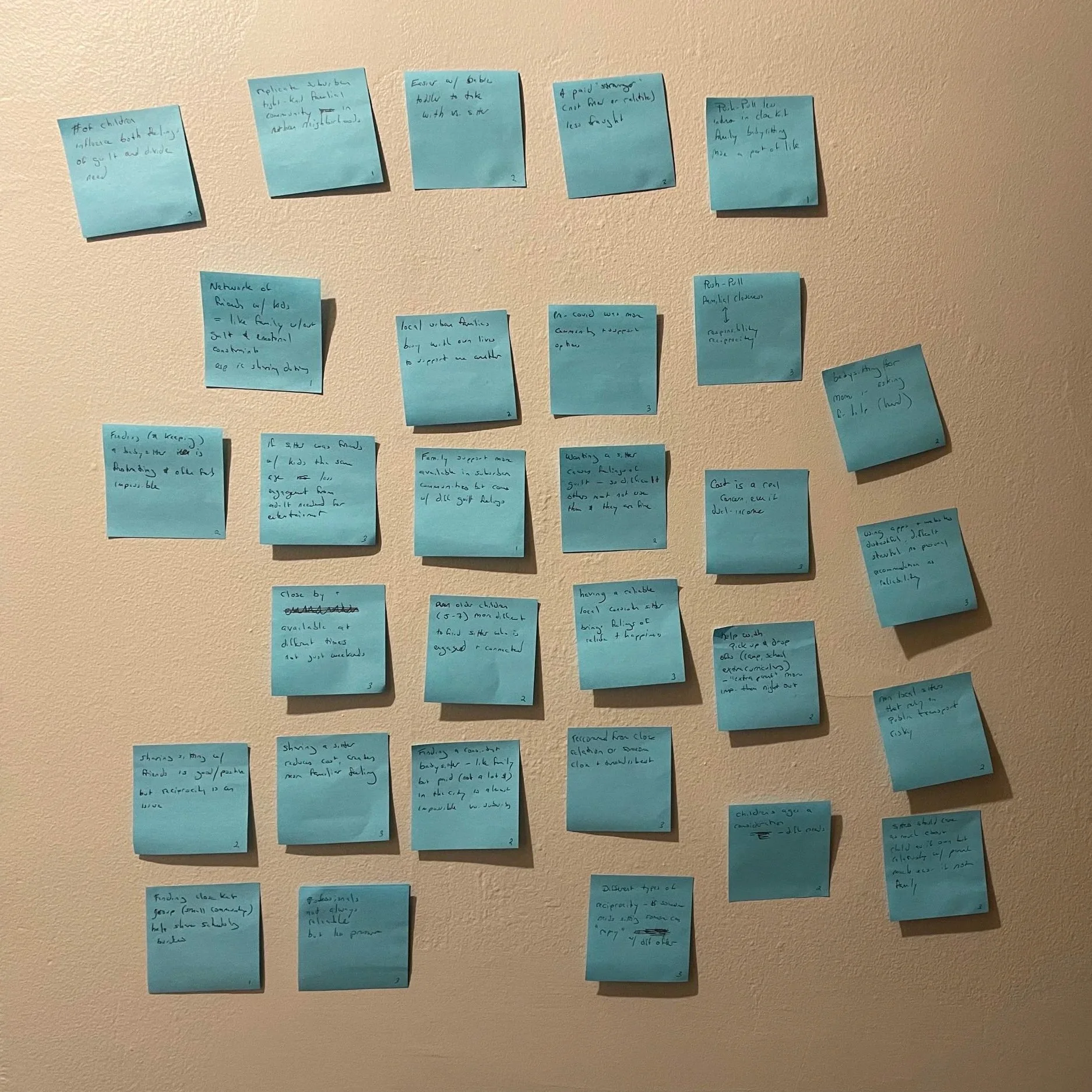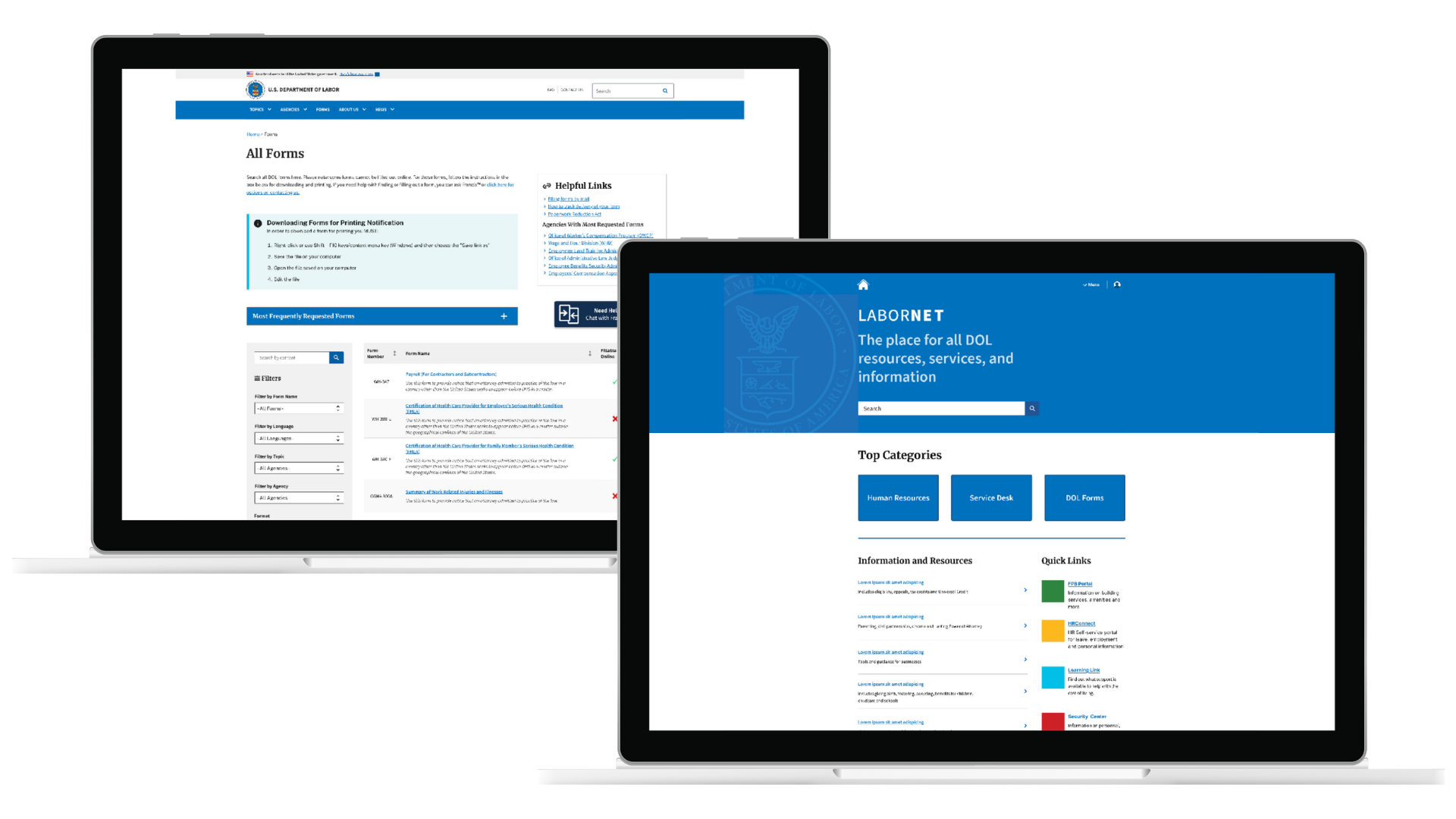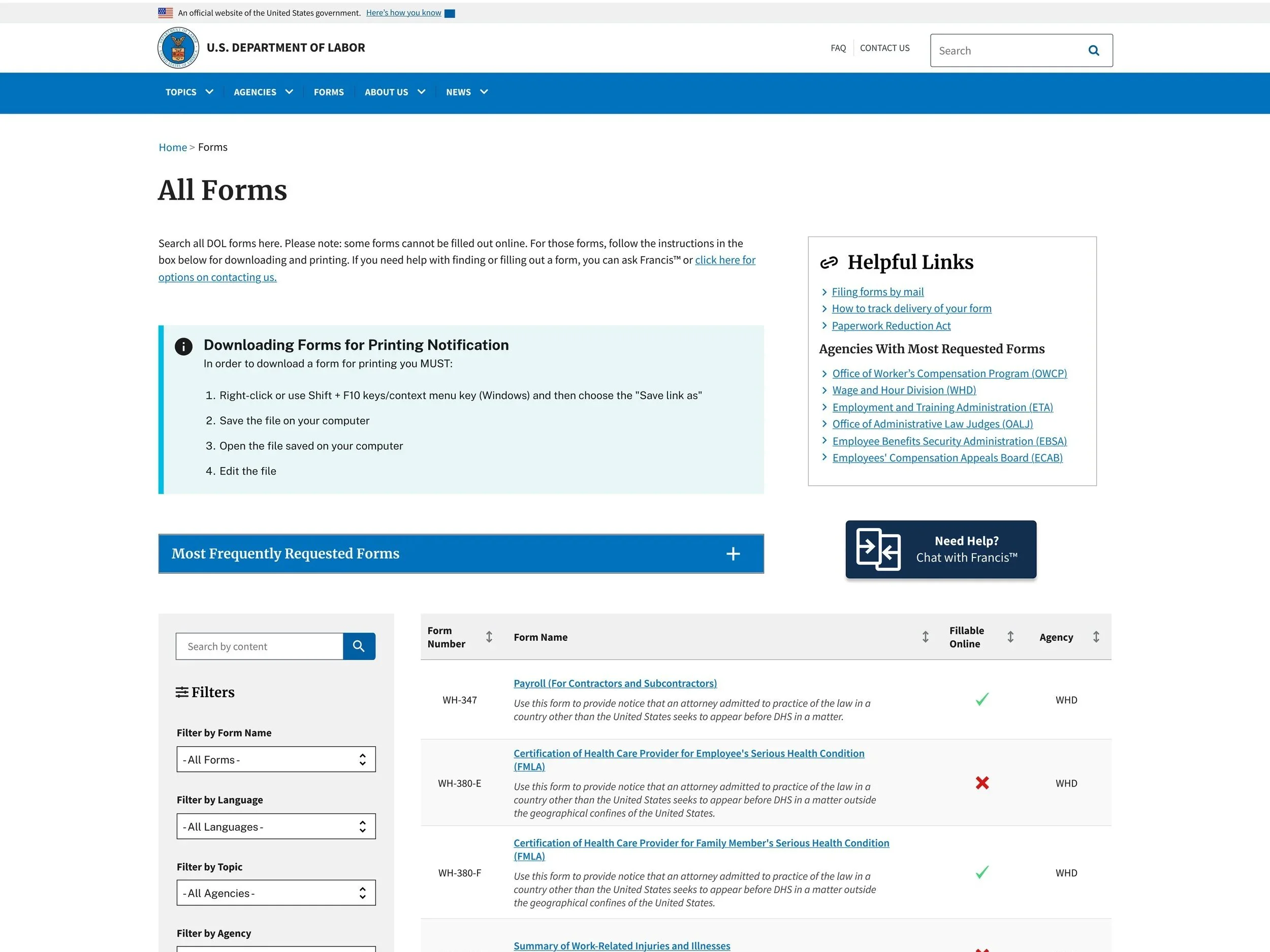Digital Modernization Initiative
U.S. Department of Labor – OCIO
As Lead UX SME for DOL.gov, I led the modernization of two high-impact platforms: the public-facing DOL.gov forms page, DOL's most frequently accessed transactional page, and Labornet, the internal employee intranet. Together, these initiatives demonstrated how thoughtful, journey-centric, AI-enhanced UX design can reduce friction, increase access, and better align government content delivery with public service goals.
Summary
DOL’s Forms page and Labornet intranet were high-traffic, high-friction platforms. Fragmented structures, poor accessibility, and content sprawl made it difficult for users to find what they needed.
I led modernization pilots to design scalable, user-centered experiences using AI-enhanced search, agentic wayfinding, and data-driven architecture. These prototypes served as proofs of concept now shaping DOL’s future-facing roadmap.
Key elements of my solutions included:
AI-enhanced faceted search to streamline navigation and improve information discovery.
Agentic AI prototypes to explore personalized wayfinding and task routing.
data-driven content architecture and user-focused metadata for multilingual scalability and improved localization and relevance.
Modular, WCAG-compliant UI patterns to future-proof content delivery across platforms.
A systems-based approach that aligned user needs with agency goals, internal content owner workflows, and federal digital policy (21st Century IDEA, M-22-23).
Early-stage research & strategic planning. Mapping user needs, positive actions, and technical constraints to drive innovation within organizational realities. (Top image: hand written notes tracking qualitative and quantitative insights, on graph paper; Bottom image: sticky note affinity graphing).
-
As Lead UX SME and Product Support for DOL.gov, I:
Strategic Leadership
Led UX strategy and accessibility governance for two high-traffic platforms.
Designed AI-powered search prototypes and agentic wayfinding interfaces;
Developed metadata-driven content architecture for multilingual scalability.
Created frameworks for ethical AI integration in government services.
Cross-Functional Collaboration
Guided external vendors through federal compliance and accessibility standards.
Collaborated with content owners, stakeholders, and technical teams across DOL agencies.
Presented research findings and strategic recommendations to leadership.
Facilitated workshops and co-presented at DrupalGovCon webinar.
Innovation & Prototyping
Rapid prototyping of AI-enhanced search and personalization features.
User journey mapping and pain point analysis.
WCAG-compliant component library development.
Post-launch optimization and measurement strategy.
Context
These modernization efforts emerged from organizational recognition that DOL's digital properties needed substantial improvement to meet 21st Century IDEA requirements and evolving user expectations. With procurement constraints limiting new vendor engagements, I leveraged existing resources and rapid prototyping to demonstrate what was possible—building stakeholder buy-in through working examples rather than theoretical frameworks.
The work represents early-stage strategic innovation: high-fidelity prototypes and frameworks that are informing DOL's long-term digital transformation roadmap and future implementation phases.
-
Challenges
Fragmented content ecosystems with minimal structure or search functionality.
Legacy tools not optimized for mobile, accessibility, or modern information-seeking behavior.
High content volume with limited metadata and inconsistent formatting across agencies.
Opportunities
Organizational momentum to improve internal and public service tools under the 21st Century IDEA Act.
Space to experiment with agentic AI for content filtering, smart search, and personalized recommendations.
Direct access to subject matter experts and content owners for iterative collaboration.
-
Outcomes
Designed and prototyped an AI-powered faceted search and agent interface for the Forms page.
Developed scalable frameworks for metadata, multilingual UX, and human-AI content delivery.
Modernized Labornet homepage with modular content and improved intranet way-finding.
Influenced internal roadmap discussions for broader AI integration and search redesign across DOL.
Key Takeaways
AI can amplify accessibility and personalization when grounded in human-centered design.
Strategic prototyping enables fast iteration and policy-aligned innovation in government environments.
Modernization isn't just about updating UIs or design systems, it's about restructuring information to reduce effort, enable users, and ensure evolving needs are met through data, user-centered research, and human-focused innovation.




